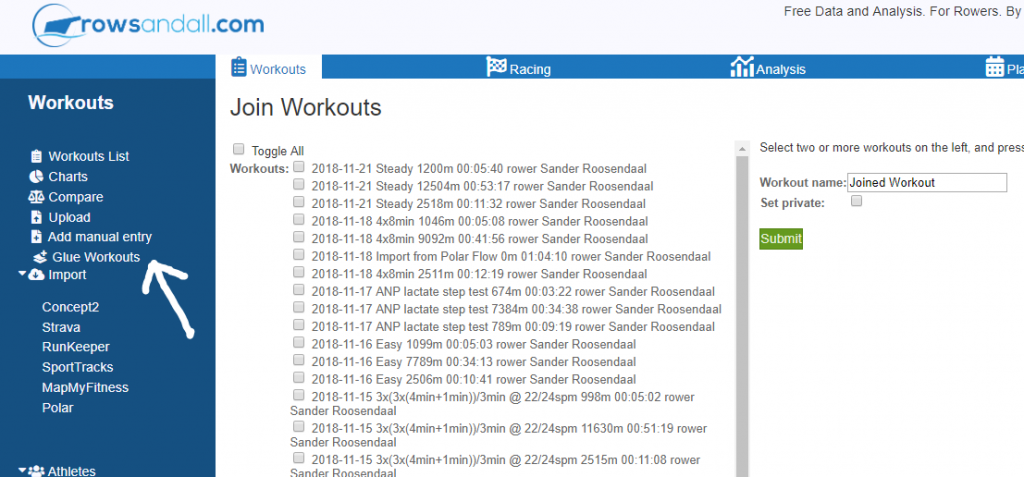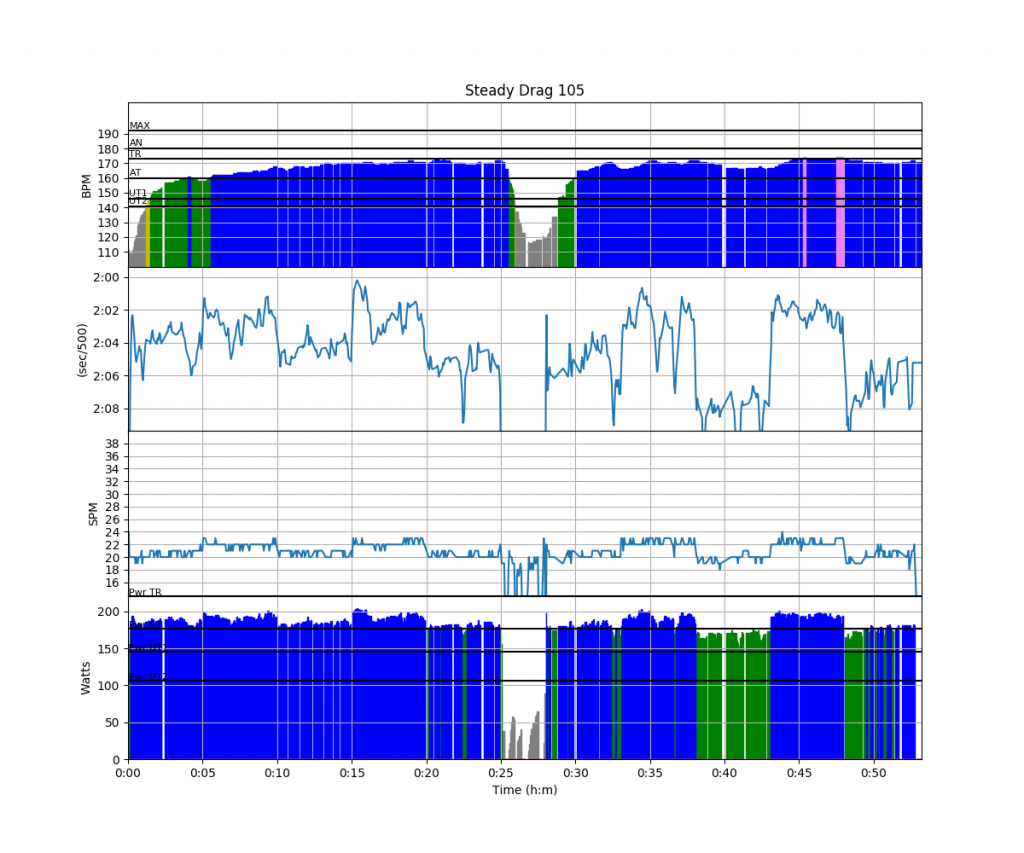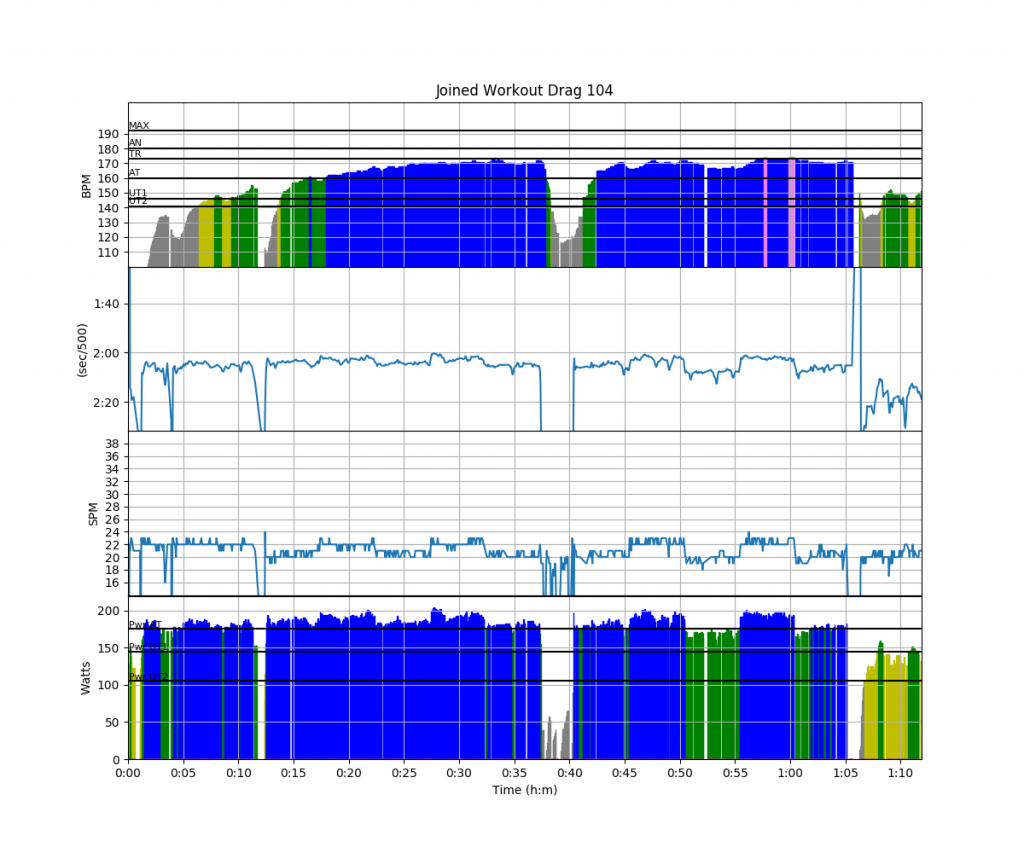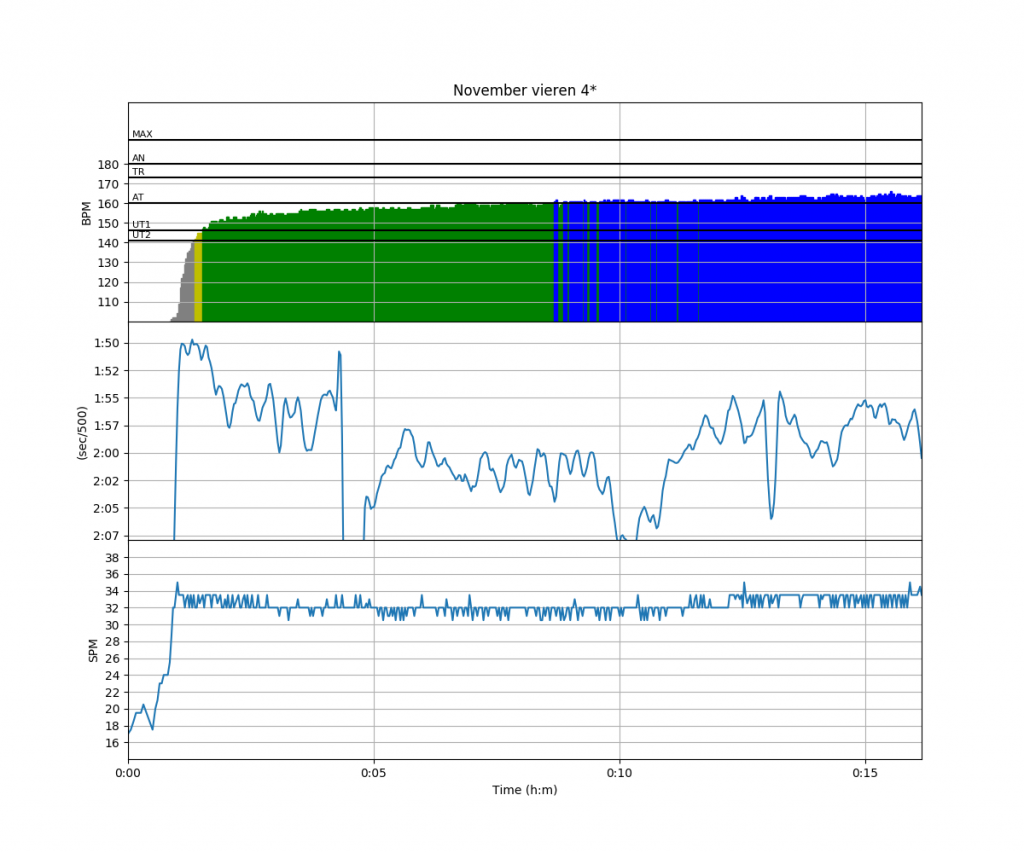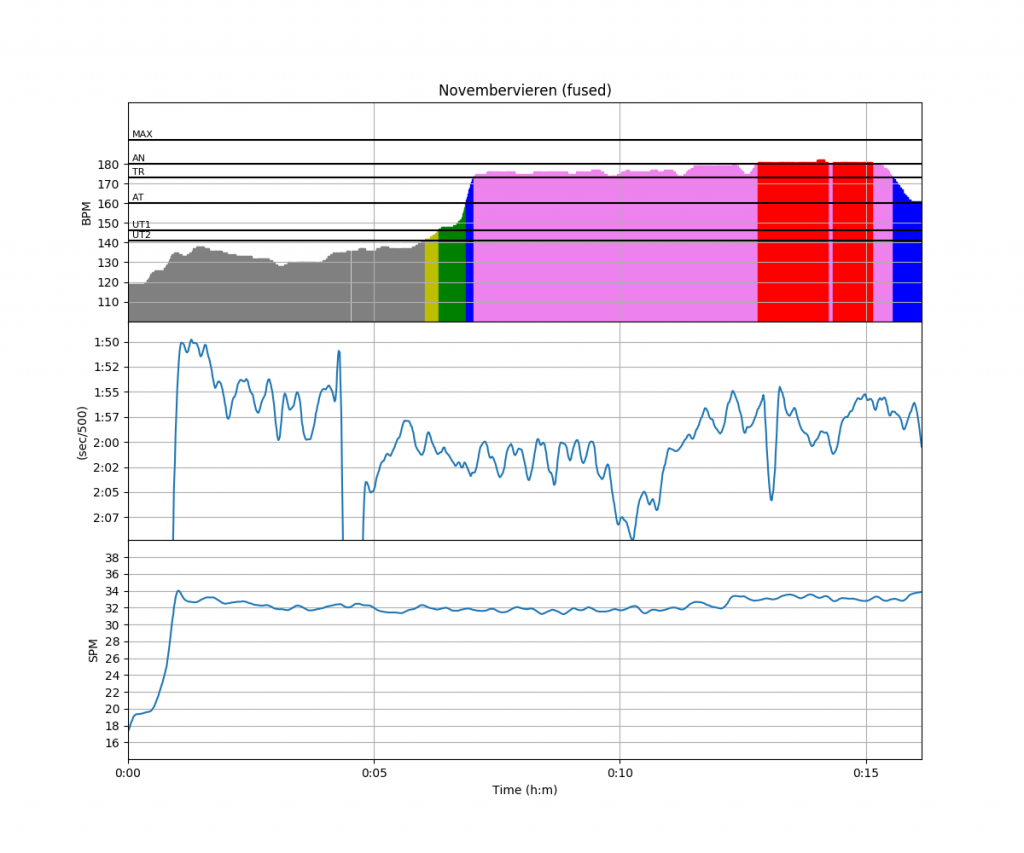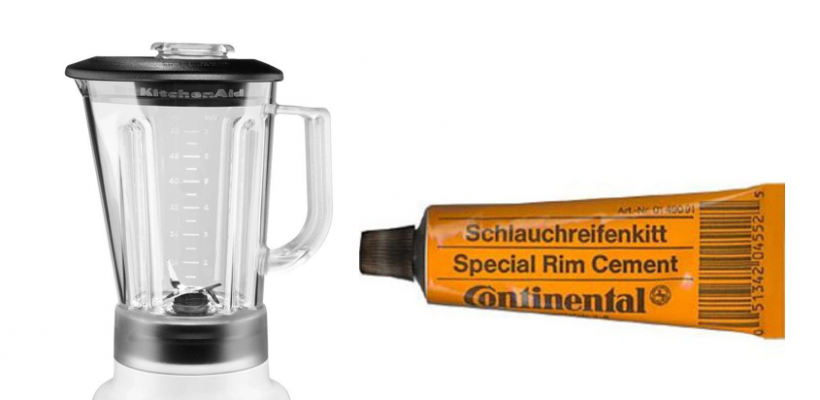
A quick explanation on the difference between the two. “Glue” puts together entire recordings in sequence. “Fusion” allows you to blend data from different sources recorded at the same time.
Glue Workouts
Glue Workouts is used when, for some reason, your recording of a workout is broken in several pieces, sequenced in time. For example, you have a separate file for your warming up, main piece, and cooling down, or for each interval. If you want to make a chart with the entire workout in one, you glue the workouts together.
The algorithm takes the three files and puts the data after each other, using the time stamps from the separate recordings.
Before:
After:
Data Fusion
The data fusion algorithm starts with the little blender icon in a workout. The blender is a good analogy.
Data fusion takes two sources of data corresponding to the same time window, and allows you to mix the data. This is useful, for example, when your heart rate belt is connected to your watch while you use a SpeedCoach or a phone to record stroke rate. Another use case is when you are working out on a PM3 without a heart rate dongle. You can record heart rate separately from the rowing data and then later fuse the two recordings.
In the following example, I am combining a SpeedCoach recording taken by a crew mate with my personal heart rate recordings. I take GPS position, stroke rate, boat speed, and all other metrics from the SpeedCoach GPS 2 recording, but I take heart rate from my Polar OH1 recording. Before:
After:
Both methods create a duplicate entry in your rowsandall.com Workouts list, so you can always go back to your original data.

